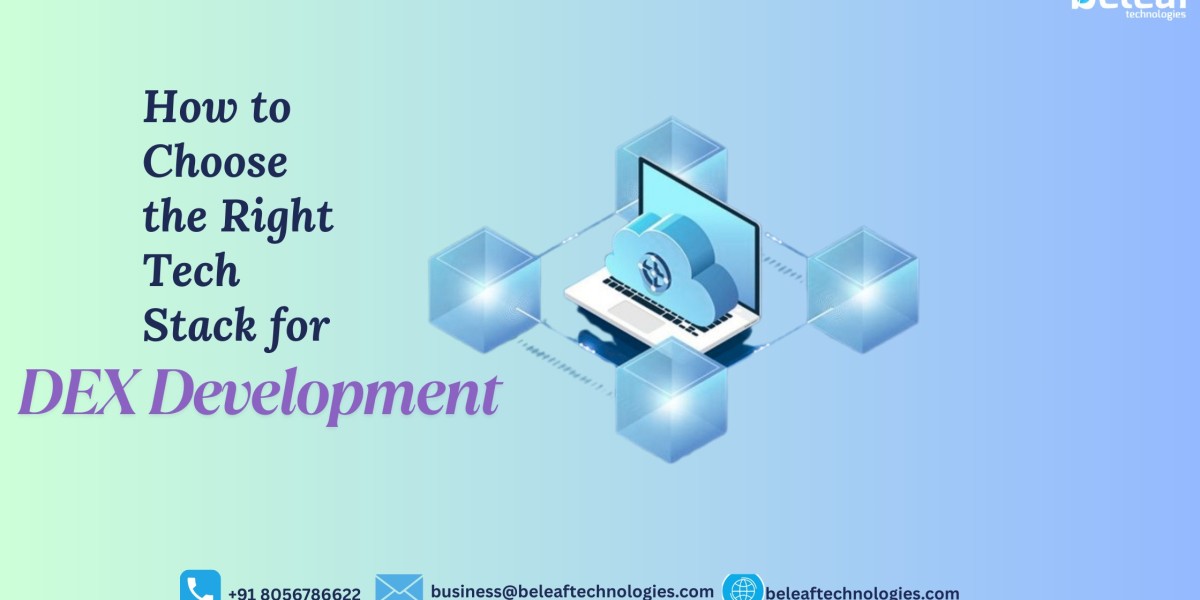A Beginner’s Guide to Building a Secure and Scalable Decentralized Exchange
A significant component of the expanding field of DeFi (Decentralised Finance) is Decentralised Exchanges (DEXs). Unlike traditional exchanges that rely on middlemen, DEXs let users trade cryptocurrencies directly through smart contracts. To build a successful DEX, choosing the right technologies also known as a tech stack is very important. This article will help you understand what goes into a DEX tech stack and how to choose the right tools for your project.
Technologies Behind Popular DEXs
Let’s look at the main components of a DEX tech stack:
Blockchain Platform: This is the base where all smart contracts run. Ethereum's robust community and support make it the most popular option. Other options include Polygon (a faster and cheaper version of Ethereum), Solana (very fast and low cost), and Binance Smart Chain (BSC).
Smart Contract Language: Most DEXs on Ethereum use Solidity to write smart contracts. On Solana, developers use Rust, which is faster but more complex. Other languages like Vyper (similar to Python) are gaining interest for their simplicity and safety.
Frontend Framework: This is the part of the DEX users interact with. Popular choices include React.js and Vue.js for building fast, responsive interfaces. Styling tools like Tailwind CSS make design easier.
Backend System: While most functions happen on the blockchain, you still need a backend for things like analytics or notifications. Node.js with Express.js is often used here.
APIs and Data Tools: Tools like Ethers.js or Web3.js connect the frontend with blockchain smart contracts.The Graph is a great tool for looking up and displaying blockchain data.
Wallet Integration: DEXs must connect with crypto wallets like MetaMask, WalletConnect, or Coinbase Wallet to allow users to trade.
Important Technologies to Know in 2025
In 2025, several advanced tools are shaping the future of DEX development:
Ethereum is faster and less expensive to use because to Layer 2 solutions like Arbitrum, zkSync, and Optimism.
Cross-chain bridges increase flexibility by enabling users to exchange assets between several blockchains.
Oracles like Chainlink bring real-world data into your DEX for example, up-to-date token prices.
AMMs (Automated Market Makers), such as Uniswap and Curve, let users trade without using traditional order books. These are essential for liquidity.
By understanding and using these technologies, you can make your DEX more powerful and future-ready.
Security and Performance Considerations
Security is the most important part of DEX developmentA single flaw in your smart contract might cost you a lot of money. Here’s how to keep your DEX safe:
For safe smart contracts, use well-tested libraries such as OpenZeppelin
Get your contracts audited by professional security firms like Certik or Trail of Bits.
Monitor the platform for unusual activity and limit requests to prevent abuse.
Performance also matters. Users expect fast, smooth experiences. Choose a blockchain that fits your needs: Ethereum is secure but expensive, Solana is fast but newer. Optimize your frontend using techniques like lazy loading and caching to reduce load times.
Flexibility and Scalability
Your tech stack should also support growth. Choose technologies that make it easy to update your smart contracts in the future. You can also consider using DAO (Decentralized Autonomous Organization) systems to let users vote on upgrades and changes.
By keeping your stack modular and flexible, you can add new features or support new tokens without starting from scratch.
Quick Overview of a Modern DEX Tech Stack
An overview of a trustworthy technology stack for a decentralised exchange is provided here:
Blockchain: Ethereum, Polygon, Solana
Smart Contract Language: Solidity, Rust
Frontend: React.js, Tailwind CSS
Backend: Node.js, Express.js, The Graph
Wallets: MetaMask, WalletConnect, Coinbase Wallet
Security Tools: OpenZeppelin, Certik
Hosting: IPFS, AWS, Vercel
Layer 2 Support: Arbitrum, zkSync, Optimism
Using this kind of stack gives you the tools needed to build a secure, fast, and scalable DEX.
Final Thoughts
The DeFi world is growing fast, and DEXs are becoming more popular every day. To stand out, your DEX must be secure, easy to use, and ready for the future.Selecting the appropriate tech stack is the first step towards accomplishing that.
By understanding how each tool fits into your project from smart contracts to user wallets you can make smart choices that help your platform succeed. It’s worth taking the time to research each technology and, if needed, work with experts to make the best decisions.
A well-built DEX with the right tech stack can give users a safe, fast, and reliable way to trade crypto and put your platform ahead of the competition.








